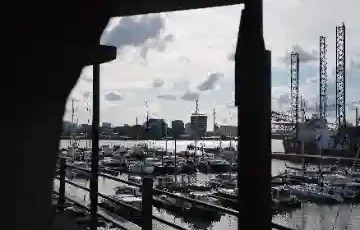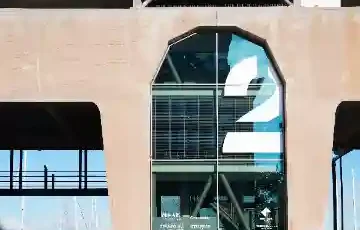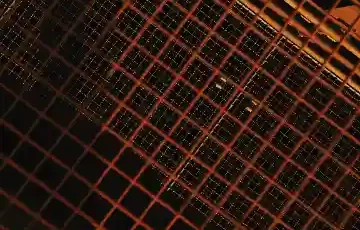Portrait right infringement under Dutch law occurs when you publish a photograph showing an identifiable person without consent, while that person has a legitimate interest in preventing publication. According to Article 21 of the Dutch Copyright Act, this applies to both privacy-related and commercial interests of the portrayed individual.
Portrait rights protect natural persons against unwanted publication of their likeness in the Netherlands. Lawyers specializing in intellectual property law observe daily that businesses unintentionally infringe these rights by using photographs without sufficient authorization or by omitting proper attribution. These violations can result in damages ranging from €500 to tens of thousands of euros, depending on the severity and context of the infringement.
What Are Portrait Rights and When Do They Apply in Dutch Law?
Portrait rights in the Netherlands grant you as the portrayed person the authority to prohibit publication of your likeness when you have a legitimate interest in doing so. This right is codified in Articles 19 through 21 of the Dutch Copyright Act and forms an essential component of Dutch intellectual property law.
The Dutch Copyright Act distinguishes between two categories of portraits. Commissioned portraits—such as professional photoshoots—may only be displayed after explicit consent from both the portrayed person and the creator. Conversely, non-commissioned portraits can generally be published without consent, provided this does not violate legitimate interests.
Being identifiable in the image forms the central criterion. This means concretely that passersby, faces in crowds, or persons at events can under certain circumstances object to publication. However, photographers may create and publish photographs of people on the street, provided they respect privacy and human dignity.
Which Two Types of Infringement Occur Most Frequently Under Dutch Law?
You primarily infringe portrait rights under Dutch law through publication without consent when privacy outweighs freedom of expression, or through commercial use without compensation for individuals with monetizable popularity. According to Article 21 of the Dutch Copyright Act, these two categories represent approximately 75% of all portrait rights cases in the Netherlands.
Context under Dutch law plays a crucial role in privacy-related violations. A notable case involved the Schiphol terror photo wherein a citizen was unwillingly associated with a frightening situation. Similarly, a passerby walking past the Red Light District appeared beneath the headline “Staring at prostitutes,” while he was merely on his way to the train station. In both instances, Amsterdam District Court ruled that privacy outweighed freedom of expression. The awarded damages amounted to €1,500 and €2,500 respectively.
Commercial interests primarily affect well-known individuals. The Dutch Football manager Louis van Gaal successfully sued when his portrait was used in a commercial without authorization. Because he normally commands substantial fees for advertising usage, the District Court awarded €25,000 in damages for lost income and unauthorized commercial exploitation.
How Does the Balancing of Interests Work in Dutch Portrait Rights?
The Dutch court weighs the right to respect for private life against freedom of expression and information according to Article 8 EVRM. Within 50 words: This balancing test determines whether publication is lawful and considers the celebrity status of the portrayed person, the degree of intimacy, and societal news value.
Therefore, well-known persons such as athletes and artists enjoy more limited privacy than ordinary citizens. However, their monetizable popularity justifies compensation for commercial use. Moreover, the photographer must always obtain prior consent for intimate or compromising images—such as nudity or embarrassing situations—regardless of the person’s fame.
The Noord-Holland District Court, the Netherlands, adjudicated a 2020 case wherein Schiphol Airport reused a photograph of a healthcare worker after she explicitly indicated that her portrait could no longer be used. Despite the photograph remaining online for merely 24 hours, the court ruled that Schiphol infringed both portrait rights and GDPR regulations. The healthcare worker received €1,500 in damages, precisely the amount Schiphol had offered beforehand.
What Are the Differences Between Commissioned and Non-Commissioned Portraits in the Netherlands?
According to Articles 19 and 20 of the Dutch Copyright Act, commissioned portraits may only be reproduced after dual consent. Both the portrayed person and the creator must approve usage. For instance, during a corporate photoshoot, an employee implicitly grants permission for internal use, but not automatically for external publications or marketing campaigns.
Non-commissioned portraits—such as street photography or festival photographs—may in principle be published without prior consent, unless the portrayed person has a legitimate interest in preventing publication according to Article 21 of the Dutch Copyright Act. This explains why photographers at events and in public spaces can work relatively freely.
Groningen District Court, the Netherlands, handled an intriguing case involving Meubelhallen Kolham wherein a sales associate was photographed during a photoshoot. After resigning and joining a competitor, her photograph appeared in a new brochure. The court ruled that the employer could not simply assume the employee had completely waived her portrait rights. Although the claim amounted to €7,000, the court awarded only €500 because the case did not involve a well-known person directly linked to an enterprise.
What Damages Can Be Claimed for Portrait Right Infringement Under Dutch Law?
Damages in the Netherlands typically range between €500 for simple infringements and €25,000 for commercial exploitation of well-known persons, based on objective standards such as usage duration, context, and market-rate licensing fees. Judges consider what is customary in comparable situations within Dutch jurisdiction.
For privacy violations without commercial elements, amounts remain relatively modest. The previously mentioned Schiphol terror photo and Red Light District photo yielded compensation of €1,500 to €2,500. These amounts primarily reflect non-material damages and satisfaction.
Conversely, commercial infringements under Dutch law can generate substantially higher amounts. When an artist or prominent Dutch person normally commands €10,000 to €50,000 for advertising usage, damages may reach that magnitude. Furthermore, besides the foregone licensing fee, additional compensation of 1% to 75% may be awarded for violation of personality rights such as missing attribution.
How Do Portrait Rights Work on Social Media in the Netherlands?
On platforms such as Facebook, Instagram, and LinkedIn, the same portrait rights rules apply as offline. Namely, you may not simply post photographs of others when they are identifiable in the image and have a legitimate interest in preventing publication. It makes no difference whether the photograph is a group photo or individual portrait.
Approximately 60% of portrait rights cases now concern social media, wherein confusion frequently exists regarding implicit consent and the scope of previously granted authorization. Users often assume that attendance at events automatically confers publication rights, but this is legally incorrect according to Dutch law.
Children constitute a special category within social media. Parents with joint custody must both grant permission for online placement of identifiable photographs. If one parent has sole custody, that parent must consent. For embarrassing or intimate situations—such as nude photographs or vulnerable moments—children can demand removal of these images after reaching adulthood, regardless of prior parental consent.
Schools employ a pragmatic approach for group photographs. Because class photos are generally not offensive, these may be placed on school websites. Nevertheless, legal advisors recommend that schools have parents sign declarations wherein they explicitly grant permission for online publication.
What Is the Relationship with GDPR in Portrait Right Cases?
Publication of identifiable portraits falls under personal data processing according to the General Data Protection Regulation, meaning that besides portrait rights, GDPR obligations also apply such as having a lawful basis and information duty. This dual protection significantly strengthens the position of portrayed individuals in the Netherlands.
The processing basis forms a crucial aspect. Article 6 GDPR requires a lawful foundation for data processing. Consent, contractual necessity, or legitimate interest can provide this basis. However, as the case between the healthcare worker and Schiphol demonstrated, invoking legitimate interest can fail when the portrayed person explicitly indicated no further publication was desired.
Moreover, an information duty exists. Data controllers must inform subjects about usage of their likeness, except for certain exceptions such as journalistic purposes. In approximately 85% of business situations, this correct information provision is absent, leading to additional liability.
What Actions Should You Take When Infringement Is Detected Under Dutch Law?
First, collect extensive evidence material. Create screenshots with visible date and time stamps of online publications. For offline infringements—such as newspaper articles or magazines—photograph the publication or scan it. Preserve this material carefully because it is essential for subsequent procedures.
Subsequently, send a demand letter wherein you specify the infringement, calculate your damages, and propose a concrete solution such as removal plus compensation according to market-rate fees. This letter need not immediately be sent via a lawyer, although legal support is advisable for complex situations or high financial stakes.
Determine realistic damages based on what you would normally have charged for comparable usage. Photographers can align with rates from Stichting Foto Anoniem, which are broadly accepted in Dutch case law as market-conform. For commercial use by well-known persons, previous licensing fees form the starting point.
Do you want certainty about your legal position regarding portrait right violations? Lawyers specializing in intellectual property law analyze your situation and advise on effective enforcement strategies, appropriate damages, and preventive measures.
How Do Employers Protect Themselves Against Portrait Rights Claims in the Netherlands?
Include explicit consent in the employment contract or have employees sign a separate quit claim wherein they waive portrait rights for business-related publications. Without such contractual agreements, the employee retains complete portrait rights, even during employment according to Dutch labor law.
Groningen District Court clarified that implicit consent is insufficient. Cooperation with a photoshoot does not automatically mean unlimited usage rights, especially not after termination of employment. Therefore, savvy employers formulate in advance which usage purposes are permitted: internal use, external marketing, social media, press releases, or recruitment campaigns.
Former employees constitute a sensitive category. As the Meubelhallen Kolham case illustrated, disputes regularly arise when ex-employees no longer wish to be associated with their former employer. Prudent businesses therefore maintain a policy wherein photographs of departed employees are removed from active marketing materials within three months.
What Defenses Exist Against Portrait Rights Claims Under Dutch Law?
Primarily verify whether the work actually enjoys copyright protection. Not every photograph receives legal protection. Product photographs with white backgrounds—wherein only an object is reproduced as naturally as possible—often lack sufficient creativity. A magistrate ruled, for example, that a stock photo of a thermometer in a car dashboard displayed insufficient creative choices to qualify for copyright protection.
Additionally, a successful invocation of quotation rights can be made when the photograph is used as illustration for a substantively relevant story, provided the photographer’s name and source are mentioned according to Article 15a of the Dutch Copyright Act. However, this defense succeeds only for actual image citations, not for photographs used merely decoratively.
Furthermore, verify the enforcement authority of the claimant. Image banks such as Getty Images, Copytrack, or Masterfile must demonstrate that they are actually authorized to enforce copyrights on behalf of the photographer. In approximately 15% of cases, this authorization is absent, causing the claim to fail.
What Are the Specific Rules for Children in Dutch Portrait Rights?
Children possess the same portrait rights as adults, but cannot themselves provide legally valid consent. Therefore, parents with custody decide on publication. For divorced parents with joint custody, both parents must consent. If one parent has exclusive custody, that parent’s consent suffices according to Article 1:253a of the Dutch Civil Code.
Approximately 40% of portrait rights disputes between divorced parents concern social media publications wherein one parent posts photographs of the child without the other parent’s knowledge. The aggrieved parent can enforce removal through interim relief proceedings and potentially claim penalty payments.
Children can after reaching adulthood reverse consent their parents granted. When photographs are compromising, vulnerable, or otherwise detrimental to their reputation or development, they can demand removal based on their legitimate interest. Schools and sports associations therefore often take only group photographs wherein individual children are less prominently featured.
Do Next of Kin Have Portrait Rights After Death in the Netherlands?
Next of kin cannot invoke the portrait rights of the deceased after death, because Article 21 of the Dutch Copyright Act protects only the portrayed person themselves and this right does not transfer to heirs. This was definitively established in 2012 when Amsterdam District Court ruled in the Nicole van den Hurk case.
The father of deceased Nicole van den Hurk attempted to prevent a television broadcast featuring images of his daughter through interim relief proceedings. Because he himself did not appear in the images and his name was not mentioned, he had no personal legitimate interest. The court concluded that next of kin have no independent right to prohibit publication of portraits of deceased persons, unless their own privacy or interests are violated.
This means concretely that photographers and media may relatively freely use image material of deceased persons, provided they respect memory and do not commit libel or slander. Nevertheless, lawyers advise restraint in sensitive situations to avoid reputational damage and public outrage.
What Role Do Animals Play Within Portrait Rights in the Netherlands?
Animals have no portrait rights because they are classified as property according to Article 3:2 of the Dutch Civil Code. Therefore, a photographer who creates professional photographs of your pet may resell these images without your consent, unless contractual agreements stipulate otherwise.
The animal’s owner does have property rights and can determine through contractual agreements what the photographer may do with the images. Prudent owners establish in advance whether photographs may be used commercially, whether these remain exclusive, and what compensation applies.
A famous case involved a monkey that took selfies with a photographer’s camera. Legally, these photographs lack copyright protection because animals are not legal subjects and therefore cannot acquire intellectual property rights. The photographer as owner of the camera likewise has no copyright because he did not create the work himself.
Contact specialized lawyers in Amsterdam for legal advice on portrait right protection, GDPR compliance for image material, or drafting watertight consent declarations that prevent disputes.








